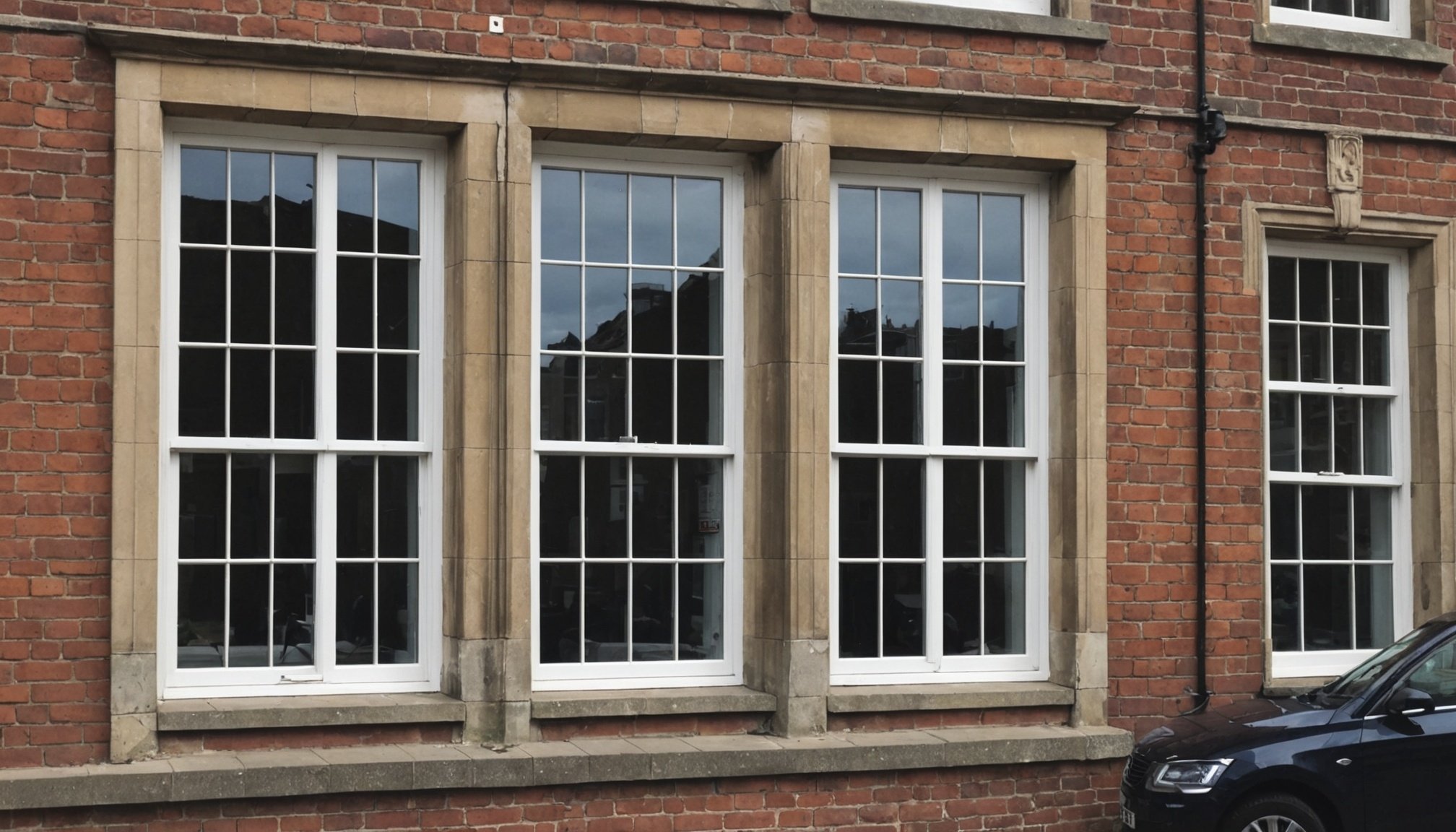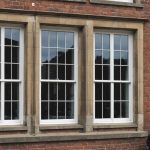Understanding Retrofitting Double Glazing
Retrofitting in historic buildings is a vital process, enhancing energy efficiency without compromising the architectural integrity. In older structures, preserving aesthetics is crucial while integrating modern technology. This is where double glazing comes into play, offering a balance between preservation and performance.
Double glazing involves the installation of two layers of glass separated by a space. This not only reduces energy consumption but also effectively minimizes noise. Its benefits are significant, especially for improving thermal insulation, which is a common challenge in historic buildings. Implementing such technology can transform outdated windows into efficient components of the building.
Also to see : Mastering Seasonal Allergy Relief: Top Tips for Indoor Plant Management in Your London Apartment
Listed buildings require careful consideration when retrofitting with double glazing. Conservation regulations often impose restrictions to maintain historical value. Hence, selecting the appropriate glazing that meets both the aesthetic and regulatory requirements is essential. Subtle design choices, such as using materials that mimic original elements, help in achieving compliance while still providing the advantages of modern glazing technology.
By understanding and selecting suitable solutions, it’s possible to retrofit historic buildings with double glazing, thereby ensuring they remain comfortable and sustainable for future generations.
Also to read : The Ultimate Guide to Kid-Safe Paints for Bedrooms in the UK: Choosing the Best Options for Your Child”s Space
Regulatory Framework for Historic Buildings
Navigating the regulations surrounding historic buildings can be as intricate as the architecture itself. In York, conservation regulations are crucial for ensuring that historic structures maintain their integrity while adapting to modern needs. Crucially, these regulations establish preservation standards that guide any retrofitting or renovation efforts, ensuring that historic character is respected and preserved.
When engaging in retrofitting projects, adherence to important compliance standards is obligatory. These standards are in place to safeguard the authenticity of historic buildings while allowing necessary upgrades. Retrofitting must aim to enhance functionality without compromising the building’s heritage value.
To further assist in preserving York’s rich architectural history, clear guidelines have been established. These guidelines are designed to maintain each building’s historic character during any modifications. They emphasize the importance of using materials and techniques that are in line with the original construction, ensuring that modern interventions complement rather than overshadow the past.
Adhering to these regulations not only protects York’s cultural heritage but also allows contemporary functionality to blend seamlessly with the city’s historical landscape. Thus, balancing modern needs with the legacy of history becomes both achievable and indispensable.
Best Practices for Retrofitting Double Glazing
Retrofitting double glazing requires careful adherence to best practices and precise installation techniques. Selecting appropriate materials is crucial to the success of this process.
Selecting the Right Materials
Choosing the right materials is fundamental in maintaining the structural and aesthetic integrity of any building. Materials should be both effective in insulating and respectful of preservation efforts. This involves opting for high-quality, unobtrusive finishes that blend seamlessly while providing optimal insulation performance.
Installation Techniques
Implementation of installation techniques that result in minimal impact is essential. Ensuring that the retrofit does not impair the building’s original architecture demands skill and precision. Start with a thorough assessment of the existing structure to understand its unique characteristics. Using advanced tools and sealing methods, professionals can seamlessly integrate the new layers without compromising the historical value.
Energy Efficiency Considerations
Balancing energy efficiency with historical integrity involves strategic planning. Retrofitting double glazing significantly reduces thermal loss and enhances energy conservation. Evaluating the building’s current insulation can highlight areas of improvement. Prioritizing the use of energy-efficient glass and frames reduces the carbon footprint while preserving the building’s charm. Employing these best practices ensures an efficient, sympathetic retrofit.
Case Studies on Successful Retrofitting
In York, the integration of double glazing in historic buildings has become a benchmark for successful projects. Let’s delve into some notable examples where historic aesthetics were preserved while enhancing energy efficiency. For instance, the Dean Court Hotel, a celebrated site, carefully implemented double glazing to maintain its charm while significantly reducing energy costs.
The techniques used in these projects varied, but thoughtful coordination between conservationists and architects was a common thread. For example, secondary glazing was often chosen because it preserved the historic windows’ integrity while improving insulation.
Several lessons emerged from these retrospective projects. Before installation, detailed assessments were crucial to maintain building authenticity and function effectively. Furthermore, selecting the correct type of glazing helped mitigate challenges associated with heritage properties, such as fitting within existing frames or ensuring transparency levels matched those of original windows.
By analyzing these successful case studies, we gain invaluable insights into better practices for future retrofitting projects. The balance between modern energy efficiency and preserving historical integrity is intricate, yet achievable. These examples from York illustrate the potential to enhance historical structures while contributing positively to sustainability goals.
Challenges and Solutions in Retrofitting
Retrofitting historic buildings can present substantial challenges, particularly when attempting to preserve architectural integrity. One primary challenge is maintaining a balance between modern needs and historical preservation. Such structures often come with outdated systems that are not equipped to handle contemporary requirements. Adapting new materials and technologies without compromising the historical aesthetics demands careful planning and creativity.
Potential solutions include integrating modern systems that respect the original architecture. For example, using discreet HVAC units or renewable energy sources like solar panels designed to blend in can be effective. Collaborating with preservation specialists can aid in identifying advanced yet unobtrusive solutions that satisfy both safety standards and aesthetic requirements.
Moreover, involving experts in the retrofitting process is crucial. Their insight and experience are invaluable in navigating complex legal and regulatory landscapes associated with historic buildings. These professionals can offer bespoke solutions, ensuring the original character is retained while still meeting modern efficiency standards.
In solving these retrofitting challenges, it is essential to address these complexities holistically, with a well-rounded approach that considers all aspects of preservation. This not only secures the building’s future but also celebrates its history.
Expert Opinions on Retrofitting
Gaining expert insights is crucial when retrofitting historic buildings. Professionals in energy efficiency and historic preservation offer invaluable perspectives. For instance, they encourage considering both energy conservation and maintaining architectural integrity. It’s advised to employ non-invasive techniques. This approach respects the original framework while enhancing efficiency.
Experts often highlight the need for a tailored approach. Buildings in York, for example, present unique challenges due to their varied structures. Recommendations generally emphasize understanding each building’s specific requirements. Avoiding the common pitfall of applying a one-size-fits-all solution is crucial. Instead, bespoke plans should be implemented that address individual building characteristics. This approach ensures the preservation of historic value while improving energy efficiency.
Looking ahead, future trends are anticipated to focus more on integrating smart technologies. These innovations promise to enhance the adaptability of historic buildings, making them more energy-efficient without compromising their historical essence. By investing in these technologies, property owners can align with environmental standards and maintain the charm of York’s architectural heritage. It’s clear that expert opinions play a vital role in shaping the future of retrofitting strategies.
Local Resources and Professional Services
When it comes to retrofitting double glazing in York, leveraging local resources and professional services can make all the difference. For property owners, especially those of historic buildings, understanding the specialized directory of services available is vital.
Many professional services in York focus specifically on the delicate task of installing double glazing in buildings where preserving architectural integrity is paramount. By consulting these experts, property owners can discover tailored solutions that align with architectural standards and energy efficiency goals. Such services not only ensure compliance with local regulations but also enhance comfort and value.
Additionally, there are often resources and grants available aimed at supporting owners of historic properties in maintaining their structures. These financial aids can significantly offset the costs associated with such upgrades, making it manageable for more homeowners to pursue these improvements.
Overall, the importance of consulting local experts cannot be overstated. Their insights and services ensure that projects are handled with the utmost expertise and care, leading to improved energy efficiency without compromising on heritage preservation. For York residents, tapping into these local resources is a strategic move towards sustainable development.











